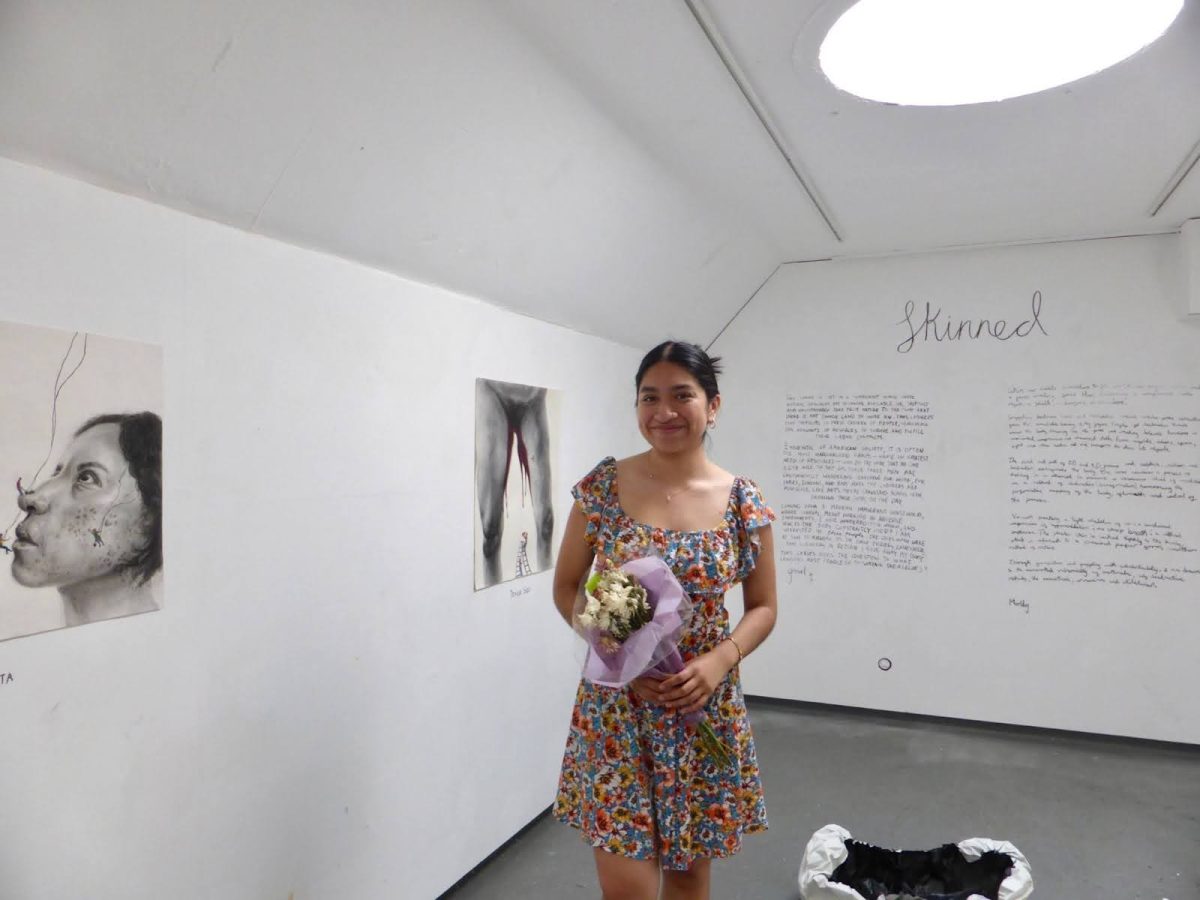On Saturday night, the Saratoga International Theater Institute (SITI) company, an internationally renowned collective founded by theater directors Anne Bogart and Tadashi Suzuki, performed their new production of The Bacchae at the ’62 Center for Theatre and Dance. The production, directed by Anne Bogart, starred Ellen Lauren as Dionysus, Toussaint Jeanlouis as Pentheus, Stephen Duff Webber as Cadmus and Akiko Aizawa as Agave. Other company members included Barney O’Hanlon, J. Ed Araiza, Leon Ingulsrud, Will Bond, Roshni Shula and Samuel Stricklen.
Euripides’ The Bacchae was translated by Aaron Poochigan specifically for this production— unlike the well-known Arrowsmith translation of the ancient Greek comedy, Poochigan used less formal language, making each exchange more playful and colloquial. Simultaneously, though, it offered a much different take on the character of Dionysus. Lauren’s portrayal of the vengeful god was reminiscent of a rockstar from decades ago. She was clad in red leather pants and swung wine bottles around the stage, in one instance appearing to pull out a full glass from thin air. She passed it off to an audience member, commenting “I know this is supposed to be a dry campus.”
This warm and free audience interaction continued throughout Lauren’s performance as Dionysus. Whenever she appeared onstage, one wasn’t quite certain where sacred text ended and improvisation began, thanks to her work and Poochigan’s translation.
The company acted as a chorus for the majority of the show. Although they didn’t seem to have the manic energy typically associated with the maenad, raving female followers of Dionysus, in the myth, they offered structure and shape to a mostly empty stage.
Brian H. Scott, the production’s set and lighting designer, offered a stunning and stark playing space which never seemed to interrupt the actors during their work. As the chorus created their playing spaces through the show, the set simply supported from behind, framing them and emphasizing the largeness of the stage. The one time there was a coordinated scenic gesture, it unfortunately fell short — as red curtains slowly descended from the fly space above the lights, a corner was caught on a lighting instrument, preventing the satisfying simultaneous drop of all three curtains.
There were other missed connections throughout the performance, too — although the chorus of actors were adept at maintaining energy throughout the show, their ability to coordinate faltered at times. Every so often, a company member would step incorrectly or raise their hand two beats too early, before everyone else had begun the same movement in moments that were meant to be synchronous. But these small hiccups only remind audience members that they are watching humans summon narratives and images live before their eyes. Instead of a spotless tragedy with a smooth surface, the audience Saturday night received a show by and for players, one that had grit and attitude to spare.
Prior to Saturday’s performance, Ellen Lauren visited an introductory theatre class on Friday morning and gave a viewpoints workshop. Viewpoints, a method developed by Anne Bogart, is a now famous methodology for actor training and devising. It consists, generally, of heightening one’s awareness of space, time and other players in the room. This awareness was clearly seen in Lauren’s performance as Dionysus, as well as Will Bond’s performance as the Second Messenger. Both of these actors are also seasoned members of the Suzuki Company of Toga, another internationally renown company based in Togamura, Japan. The founder and director, Tadashi Suzuki, met Anne Bogart on a visit to America in the 1970’s, and their collaboration led to the creation of SITI Company, as well as an exchange of actors between the two companies. Suzuki’s actor training method is much more regimented and physically demanding than Bogart’s viewpoints, prompting the pairing of the two together. SITI Company boasts that their thread holding the group to-gether artistically is the daily practice of these two methods.
The performers of The Bacchae certainly exhibited this technical skill, and their harmony as a company was one of the most memorable elements of Saturday’s performance.







